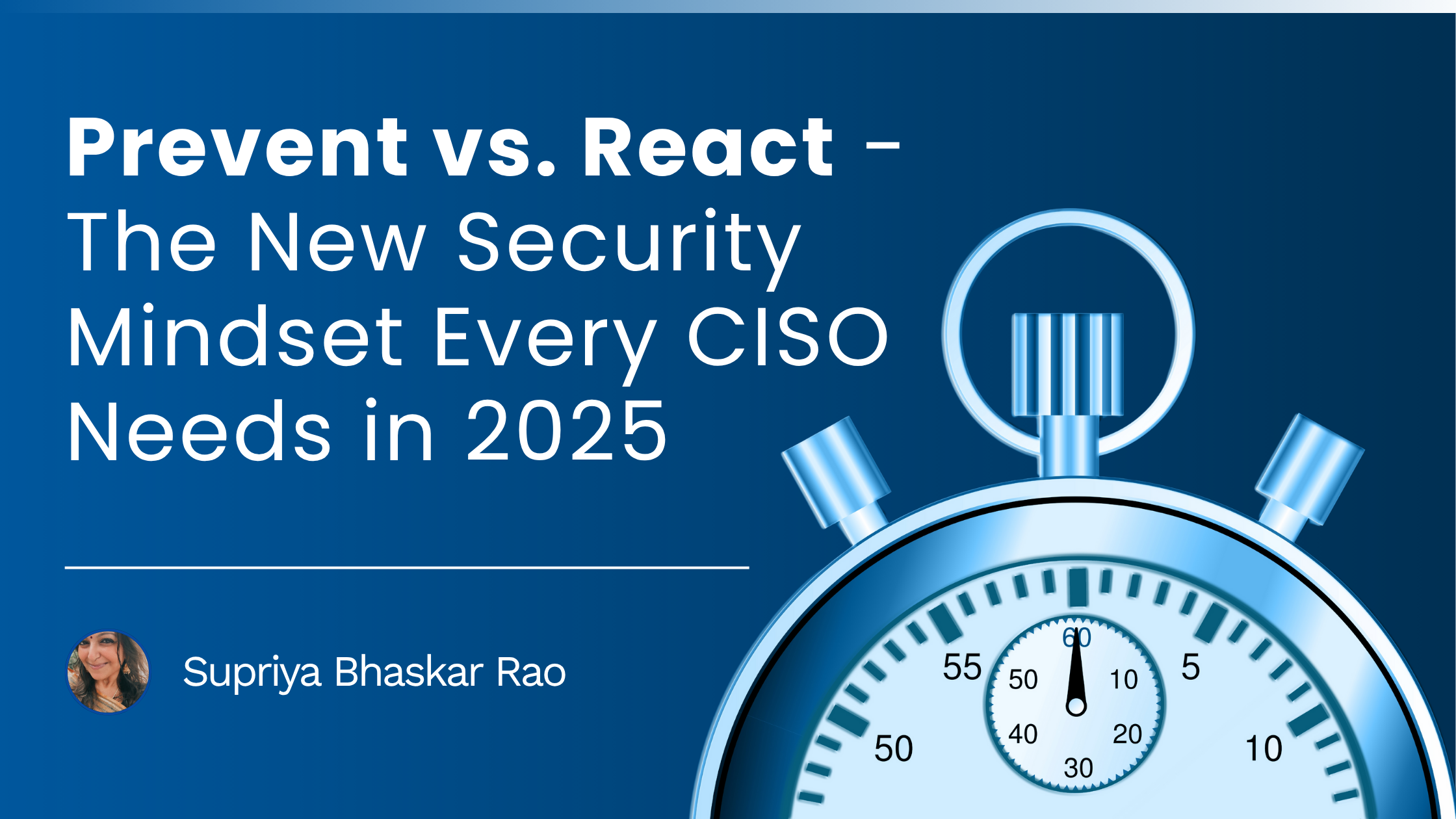A New Security Reckoning
2025 is shaping up to be a turning point in cybersecurity. Not because threats are new – but because the old ways of dealing with them are breaking down. Faster attacks. Smarter attackers. Heavier regulatory pressure. Rising costs. And an overwhelming volume of security data that rarely translates into meaningful protection.
For CISOs, the writing is on the wall: reactive security isn’t enough anymore.
Relying on alerts, SIEM dashboards, and hope that someone will respond fast enough won’t cut it. The cost of waiting until an attack is in motion is too high. The stakes are too real.
Enter – prevention. Not as a buzzword, but as a business-critical strategy. One that reduces risk exposure before threats become breaches. One that aligns security with operational efficiency. And one that defines the new breed of resilient, future-ready security programs.
Why 2025 Demands a Shift to Prevention
This isn’t about future-gazing. The pressure to change is already here.
1. AI-Powered Threats Move Faster Than Response Teams
Attackers are using AI to find and exploit misconfigurations, vulnerable identities, and exposed workloads at scale. What used to take days or weeks can now be executed in minutes. Waiting for a detection system to raise a red flag is a losing game when adversaries are exploiting gaps in real-time.
2. Regulations Are Raising the Bar
From DORA in Europe to SEC cybersecurity disclosure rules in the U.S., regulators are no longer interested in how quickly you respond. They care about how effectively you prevented the incident in the first place. Proactive risk management is becoming a compliance expectation.
3. Boards Want Fewer Incidents, Not Faster Responses
Cyber risk has become business risk. That means security leaders are being asked tougher questions in boardrooms:
- What are we doing to prevent attacks?
- How exposed are we?
- Are we investing in risk reduction or just risk reaction?
Prevention is no longer just a security goal – it’s a business mandate.
The Real ROI of Prevention
Reactive security is expensive. Not just in terms of breach costs, but in human hours, lost trust, downtime, and compliance risks.
Let’s compare:
The Cost of Reaction:
- Incident response teams stretched thin
- Post-breach investigations consuming weeks
- Compliance fines for delayed disclosures or repeat issues
- Reputational damage that impacts stock price and customer retention
The ROI of Prevention:
- Lower attack surface = fewer entry points
- Automated remediation = less manual work, faster fixes
- Improved audit readiness = stronger compliance posture
- Team efficiency = reduced alert fatigue and smarter use of resources
In short: prevention isn’t just better security. It’s better business.
Prevention in Practice: What It Really Looks Like
Prevention isn’t an abstract goal. With the right architecture and approach, it becomes operational.
1. Real-Time Remediation
This means fixing misconfigurations, exposed services, and policy violations as they happen – not after someone files a ticket.
- Policies enforced continuously
- Misconfigs auto-corrected
- No human needed in the loop for every low-hanging issue
2. Attack Surface Reduction
Reduce what attackers can see and touch. This includes:
- Disabling unused services
- Minimizing exposed public endpoints
- Removing excessive permissions
- Segmenting high-risk workloads
3. AI-Powered Posture Intelligence
Use machine intelligence to:
- Spot risky patterns
- Predict exploit paths
- Prioritize fixes based on context, not just severity
This is where security becomes proactive – shaping posture in advance of an attack, not reacting after the fact.
Introducing the PREVENT Framework
To help CISOs operationalize this new mindset, we’ve developed the PREVENT Framework – a strategic model for implementing real cloud prevention.
P – Prioritize What Matters
Move away from alert volume. Focus on risks that are:
- Exploitable
- Exposed
- Business-critical
R – Remediate in Real-Time
Automate where possible. Remove reliance on slow ticket queues and human follow-ups. Make remediation continuous.
E – Enforce Policy Everywhere
Whether it’s AWS, Azure, on-prem, or hybrid:
- Ensure controls are consistent
- Eliminate policy drift
- Align enforcement with compliance
V – Validate Continuously
Use telemetry and AI to:
- Monitor posture in real time
- Detect regression
- Guide optimization
E – Eliminate the Noise
Reduce alert fatigue. Focus attention on high-confidence, high-priority risks that actually require human input.
N – Normalize Resilience
Bake prevention into operations:
- Make it routine
- Make it visible to leadership
- Make it measurable
T – Test Against Real-World Scenarios
Don’t assume controls work. Continuously validate them with:
- Attack simulations
- Red teaming
- Risk-based drills
Together, these principles form a modern blueprint for proactive cloud security.
Why Prevention Requires a Culture Shift
Technology alone doesn’t close the Prevention Gap. Culture does.
Security teams need to shift from:
- Firefighting mode to engineering mindset
- Alert monitoring to outcome ownership
- Blame to collaboration across teams
This shift requires buy-in from leadership. It means redefining KPIs. And it means treating prevention not as a side goal – but as a core measure of security maturity.
Want to shape the future of cloud security?
Join us in our bid to prevent cyberattacks, and not just reacting to them. Visit https://www.secpod.com/saner-platform/ to know how we do it.
The Mindset That Defines The Security of Today
The most resilient organizations in 2025 won’t be the ones who react the fastest. They’ll be the ones who made sure there was less to react to in the first place.
Prevention is faster than detection. More efficient than response. And far less costly than recovery.
It’s not a future concept. It’s a present imperative.
Now is the time to make the shift.

